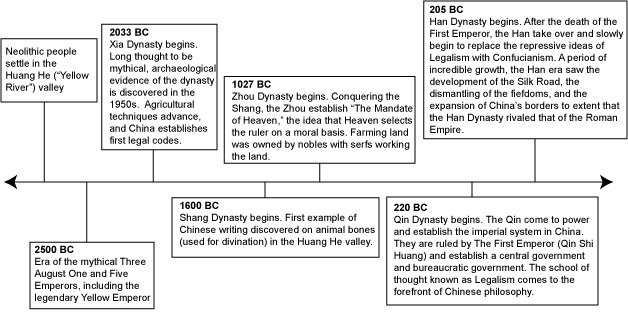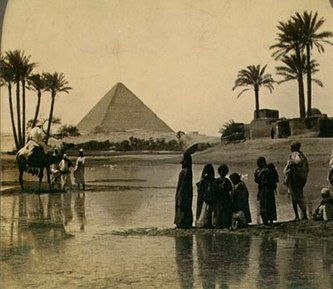 username@email.com
username@email.com
The next several lessons will compress a lot of time into relatively few pages, but it will help you brush up on the who, what, where, when, and why of world history.
In this section, we want to give you a chance to review your knowledge of the Sumerians, Alexander the Great, the ancient Greeks, and all the other bits of knowledge that you may not have studied since college. To begin, let’s start with some of the great civilizations of the ancient East and Middle East.
Ancient civilizations often relied on the fertile climate of river valleys for their survival. The development of farming in 8500 BC made it possible for once-nomadic cultures to settle in permanent communities. Civilizations within Egypt, Mesopotamia, India, and China settled respectively along the Nile, Tigris and Euphrates, the Indus, and the Yellow rivers.

Cuneiform tablet
Much of what we know today as basic tenets of civilization started with the Mesopotamians. Originating in the mountains of Turkey, the Tigris and Euphrates rivers join in southern Iraq and empty into the Persian Gulf near the modern-day city of Basra. The region dependent on these two rivers came to be known as Mesopotamia, a word that means “the land between two rivers.” Mesopotamia is important, in part, because its first major civilization, Sumer, was so culturally powerful. Sumer’s cuneiform writing influenced later writing systems across the Mediterranean basin; moreover, as a result of its early development of writing, Sumer is the first culture to enter written history.
The region is also significant because the Mesopotamian city of Jericho is the world’s first known city, having been settled as far back as 8000 BCE.
Sumer is often regarded as the earliest human civilization. It flourished from around 3200–2360 BCE and was characterized by city-states. These were cities (and the land surrounding them) ruled by a sovereign priest or king. Some of the major city-states included Lagash, Uruk, Ur, Kish, and Nippur. Based on the Sumerian king list (a detailed account of the successive Sumerian dynasties) we know that the King of Kish, Enmebaragesi, would later unite the twelve city-states under one rule. The Epic of Gilgamesh (written in the later Babylonian era) portrays the siege of Uruk by Agga, Enmebaragesi’s son.
The Sumerian culture was succeeded by Mesopotamian civilizations, including the Hittites, the Akkadians, and the Assyrians.

Shang Dynasty
In China, dynasties ruled ancient times. Each dynasty brought its own strengths to the life of the civilization. The Shang Dynasty’s skill with bronze and other metals remained unrivaled for centuries, and the time period spanning 771–221 BC saw the beginnings of Daoism, Confucianism, and Legalism. The timeline below shows the basic shape of ancient dynastic China.

Timeline of ancient China

This NASA image provides a good look at the life-giving Nile.
People began living in villages in the Nile river valley as early as 5000 BC, and the Pharaoh Menes is credited with uniting the people of lower and upper Egypt circa 3200 BC. Memphis was the capital of this Egyptian empire.

Vintage photograph of the Great Pyramid of Giza
The Great Pyramid of Giza in the photo above was completed around 2500 BC and was a tribute (or burial spot) for the Fourth Dynasty king Khufu, also known by his Greek name Cheops.
Incredibly, thirty successive dynasties ruled Egypt until the Persian invasion in 341 BC. The land was also conquered by the Greeks, the Romans, and Muslim Arabs, who introduced Islam to the region in the seventh century. The Muslims ruled for another six centuries before falling to the Ottoman Turks in 1517.

NASA satellite image of Indus River valley
Another of the great ancient civilizations, the Indus Civilization covered the area that is now Pakistan and parts of modern-day India and Afghanistan. The Indus cultures relied on the Indus River for sustenance, and some historians have suggested the existence of another now-dried-up river running parallel to the Indus.
Of all the ancient cultures, the Indus may be the most mysterious. While it is known that this civilization flourished in the second century BC, not much is known about the language or culture of the peoples who lived there in comparison with Egypt, Mesopotamia, and China.
What is known points to a highly-organized and urban culture: cities comprised thousands of residents, streets that were laid out in grids, and sanitation systems that were built using precise measurements.